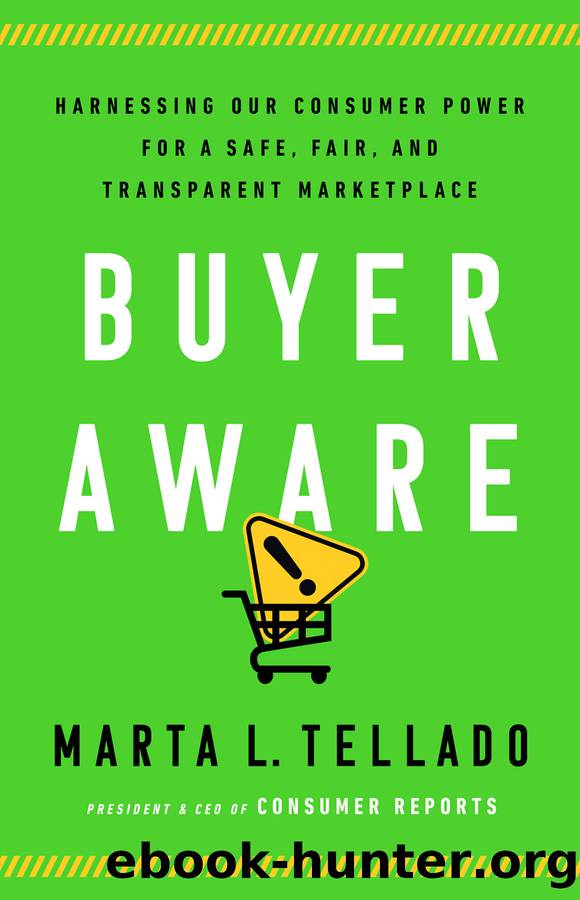Buyer Aware by Marta L. Tellado

Author:Marta L. Tellado [L. TELLADO, MARTA]
Language: eng
Format: epub
Publisher: PublicAffairs
Published: 2022-09-20T00:00:00+00:00
CREDIT DESERTS
As I mentioned in Chapter Three, the ability to borrow money at a reasonable interest rate is an essential prerequisite of wealth accumulation in America. Of course, it pays to be smart about it. Like too much rain, too much borrowing just makes things worse. Without it, though, nothing grows.
The problem for twenty-six million American adults is the lack of any borrowing history, and hence no way for credit scores to be calculated. Without a credit score itâs impossible to borrow from a reputable source. And without a reputable source to borrow from, the only places to go are payday lenders, whose reputation is so corrosive that some towns and countiesâthough not enough of themâhave gone through the arduous process of restricting them.
Credit scores were introduced in the 1950s with the intention of objectively measuring creditworthiness based on a consumerâs historical ability to pay back borrowed money. Two companies, FICO and VantageScore, create the scoring models for the three major credit-reporting firmsâExperian, TransUnion, and Equifaxâthat track your past financial behavior. The higher your score, the more likely youâll receive a lower interest rate for a credit card, mortgage, or car loan.
Credit scores reward people who already have a credit history, but itâs hard for those who donât have a credit history to establish one, a circular problem that haunts Black Americans more than any other group. If only these consumers could qualify for a credit card and repay the balance every month, they could start creating a credit history. But whoâll take a chance on issuing a credit card to someone who can offer zero evidence theyâll repay the money? Itâs a Catch-22. Thirty-two percent of African Americans versus 18 percent of whites didnât have enough information in their credit reports to generate a score in 2019. âFor most lenders, everything begins and ends with that score,â said Syed Ejaz, a Consumer Reports financial-policy analyst.
The result: 46 percent of Native Americans, 41 percent of Blacks, and 31.5 percent of Latinos have subprime credit scores, meaning they borrow at higher rates. For white borrowers, the number is 18 percent.
That might explain why payday lenders in California have 50 percent more storefronts in predominantly Black and Latino communities than in mostly white neighborhoods. Or why they target minority internet users with online advertising. Or why African Americans make up 12 percent of the US population but 32 percent of payday borrowers. Or why Latinos make up 11 percent of Americans but 15 percent of payday borrowers. Payday companies also do well with women, who comprise 60 percent of their borrowers, and people between eighteen and twenty-four years old, people just starting their financial lives, who are the majority of their customers.
The statistics are alarming, but they canât describe the heartache and desperation of a woman who has few alternatives to stay above water besides a payday loan. Kimberly Richardson, a Black woman living in Tennessee, got caught in a payday lenderâs debt whirlpool in 2020, and it wouldnât let her go until she was ruined.
Download
This site does not store any files on its server. We only index and link to content provided by other sites. Please contact the content providers to delete copyright contents if any and email us, we'll remove relevant links or contents immediately.
Harry Potter and the Goblet Of Fire by J.K. Rowling(3046)
Never by Ken Follett(2882)
Shadow of Night by Deborah Harkness(2718)
Ogilvy on Advertising by David Ogilvy(2682)
Zero to IPO: Over $1 Trillion of Actionable Advice from the World's Most Successful Entrepreneurs by Frederic Kerrest(2396)
The Man Who Died Twice by Richard Osman(2300)
Machine Learning at Scale with H2O by Gregory Keys | David Whiting(2292)
Book of Life by Deborah Harkness(2263)
How Proust Can Change Your Life by Alain De Botton(2261)
My Brilliant Friend by Elena Ferrante(2224)
0041152001443424520 .pdf by Unknown(2220)
The Tipping Point by Malcolm Gladwell(2204)
How to Pay Zero Taxes, 2018 by Jeff A. Schnepper(2100)
Will by Will Smith(2043)
Purple Hibiscus by Chimamanda Ngozi Adichie(1982)
Hooked: A Dark, Contemporary Romance (Never After Series) by Emily McIntire(1960)
Borders by unknow(1785)
Rationality by Steven Pinker(1765)
Daughter of Smoke and Bone by Laini Taylor(1744)
